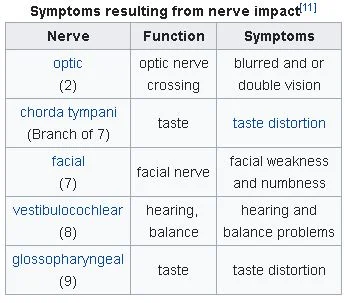A 27 y.o. woman presents with HA and difficulty letting go of objects when she grips them.
Her MRI is shown below and shows an epidural fluid collection anterior to spinal cord .
What is wrong?
Our patient had a spontaneous CSF leak. She was leaking CSF at T12 causing decreased volume in the head and intracranial hypotension. The key to the diagnosis was that she had an orthostatic headache; much worse when she was upright. Compression of the cord probably accounted for her arm findings. As the CSF continues to leak: the lower part of the brain descends causing tension on cranial nerves. This can result in blurred or double vision, taste distortion, facial weakness and balance problems.
Spontaneous dural leak was first described by a German neurologist, Georg Schallenbrand in 1938 when he discovered negative CSF pressure in patients with spinal taps. It occurs in 5/100,000 people and is more common in women. 94% of individuals with a spontaneous CSF leak first present to an ED for evaluation and are misdiagnosed as migraines, meningitis, chiari malformations or psychiatric problems.
Spontaneous leaks are often familial and can be associated with Marfan’s, aortic aneursyms or other connective tissue diseases. It is estimated that 2/3 are associated with connective tissue disease involving the dura. When the leak is small, the headache produced is called a “second half of the day headache” because it often appears in the afternoon.
fluorescein injected in the lumbar area can show where the dural leak is after septoplasty
CSF leaks are also associated with trauma: lumbar punctures, brain surgery and ENT surgery, with rhinoplasty being a frequent culprit. They can occur in weight lifters because of increased pressure. They can be difficult to diagnose with CT and MRI often being negative. CT myelogram or T2 weighted MR myelography are often used to make the diagnosis. Of course, if fluid is leaking from the nose or ear, a beta-2-tranferrin assay can be performed to make the diagnosis.
Treatment involves sealing the leak either with a blood patch or fibrin glue. Our patient was a weight lifter although it is not clear if this caused her CSF leak. A blood patch was done and she became asymptomatic.
References
Leep–Hunderfund, A, Mokri B, Second half of the day headache as a manifestation of spontaneous CSF leak. 2011. Journal of Neurology 259(2): 306-10.
Schievink W, Maya M, Moser F, Tourge J, Torbati S. Frequency of spontaneous intracranial hypotension in the ED. 2007. Journal of Headache and Pain 8(6) 325-328.
Schievink W, Deline C. Headache secondary to intracranial hypotension 2014. Current Pain and Headache Reports. 18(457):1-9.
And my favorite
SPINAL CSF LEAK FOUNDATION/ BECAUSE YOUR DURA MATERS



